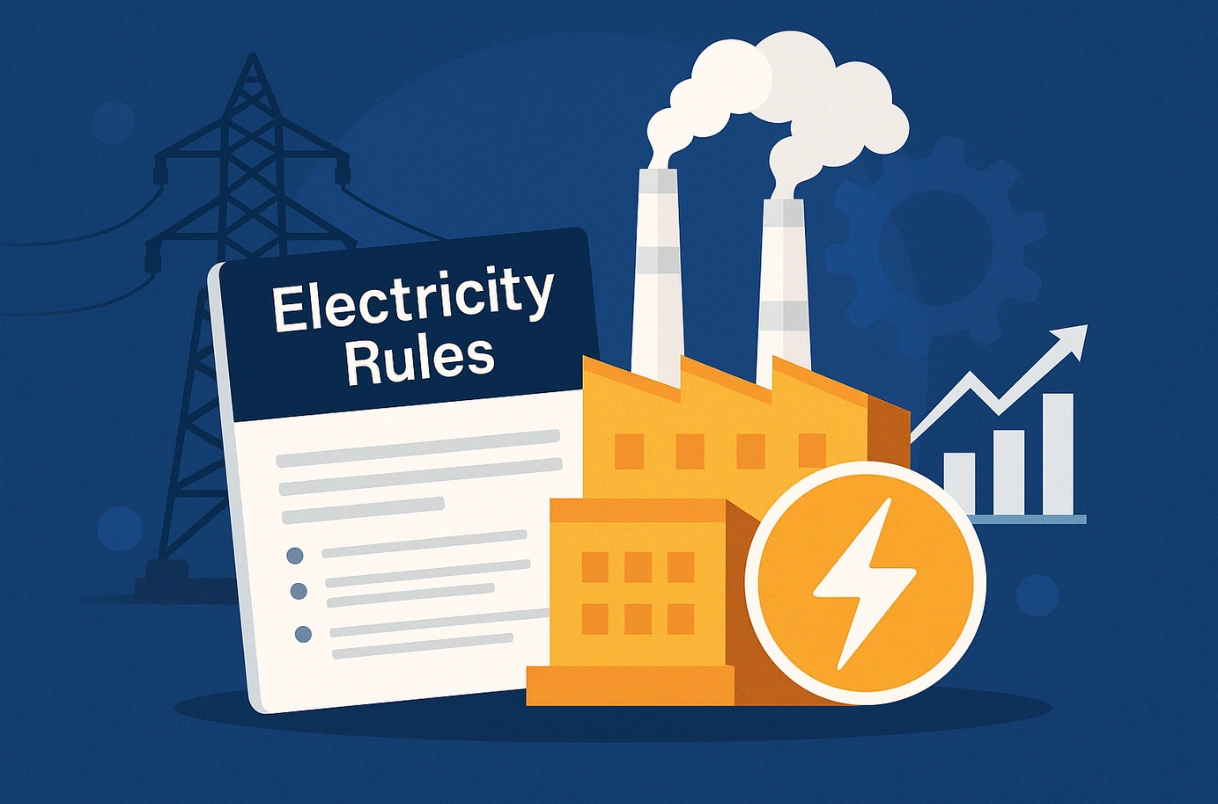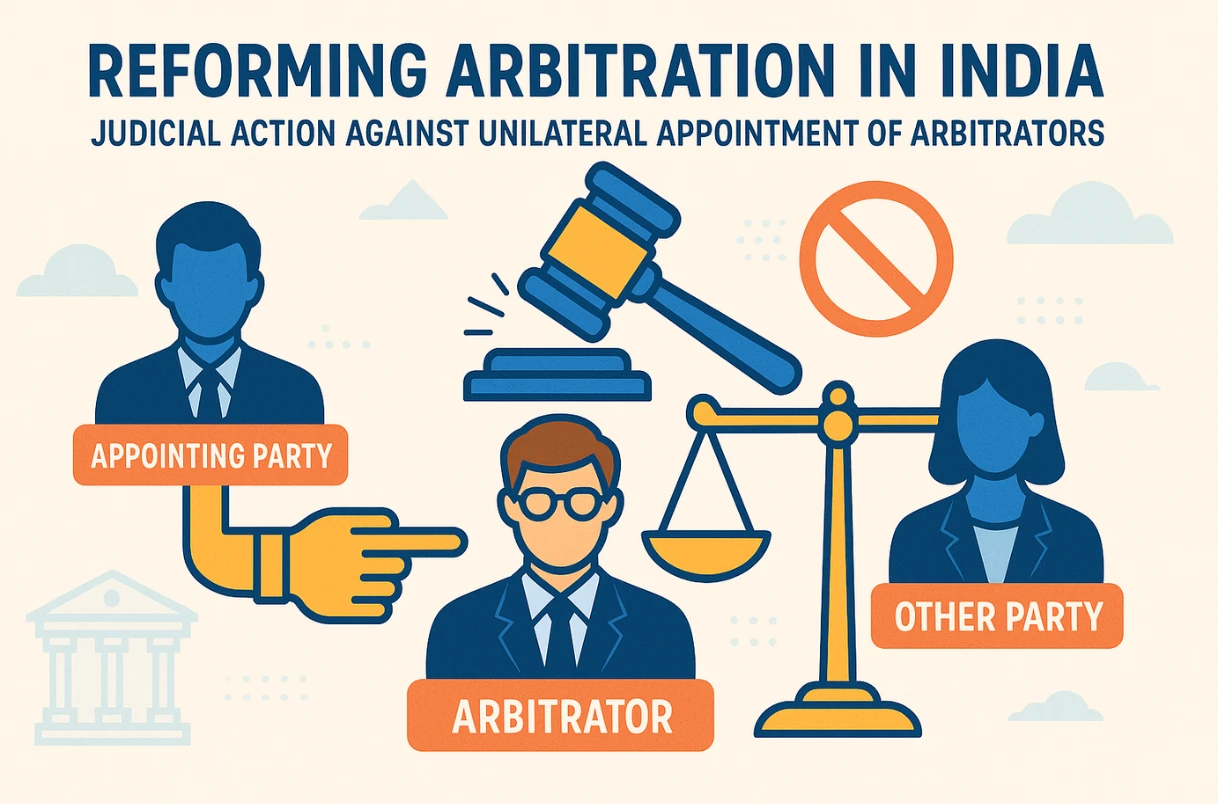Proposed Amendments to Captive Generation Criteria under Electricity Rules

Table of Contents
The Ministry of Power, Government of India, has recently circulated Draft Electricity (Amendment) Rules, 2025 (“Draft Rules”), amending Rule 3 of the Electricity Rules, 2005 (“Electricity Rules”), dealing with captive generation, calling for comments on the same by 22.10.2025.
Regulatory Framework of Captive Arrangements
The Electricity Act, 2003 (“Electricity Act”), under Section 2(8), defines “captive generating plant” as a power plant set up by any person to generate electricity primarily for his own use including a power plant set up by any co-operative society or association of persons for generating electricity primarily for use of members of such co- operative society or association.
Supply availed by a captive user from a captive generating plant is eligible for various benefits under Section 42, viz. waiver of payment of cross subsidy surcharge and additional surcharge to the local distribution company.
Rule 3 of the Electricity Rules issued by the central government lays down the requirements for a power plant to be considered as a captive generating plant. As per the said rule, the twin criteria to be established to qualify as a captive arrangement are that – first, the ownership criteria for captive plants is that the users should not hold less than 26% of the ownership in the CGP and secondly, the captive user consumption criteria is that the users should consume not less than 51% of the aggregate electricity generated by such CGP.
Changes under the Draft Rules qua Association of Persons
Current Position
As per the extant Rule 3, the consumption requirement for an Association of Persons (“AoP”) is meant to be proportionate to their shares in the ownership of the CGP, with an allowed variation of ±10 percent. The Supreme Court in the recent decision in Dakshin Gujarat Vij Company Limited versus Gayatri Shakti Paper and Board Limited & Another [C. A. No. 8527 – 8529 of 2009] had specified a unitary qualifying ratio of 1% share: 1.96% of energy consumption based on such proportionality test.
Position under Draft Rules
The recent Draft Rules cut across the proportionality test. As per the proposed amendment, the conditions of eligibility in terms of ownership and consumption have to be satisfied collectively by all captive users in case of AoP. The unitary qualifying ratio worked out by the Supreme Court will no longer apply to captive power plants set up by an association of persons, including incorporated companies.
Impact of Proposed Amendments
If the amendment is ultimately brought into force, it will prove to be a boon for group captive set-ups, where small and medium size entities come together to invest in a captive plant. Often, such groups face the threat of losing captive status when any one or more of such captive users are unable to meet their minimum consumption threshold due to business or other exigencies. The proposed rule will do away with such situations, as the minimum consumption will have to be satisfied collectively by all captive users.
However, there is ambiguity in the language of the proposed amendment to the extent it provides that the benefit of captive consumption for each user has been restricted to a maximum of 110% of their proportional entitlement, calculated with reference to their share of ownership in the power plant. An illustration has also been provided in this regard in the amendment for further explanation. The illustration seems to suggest that the proportionality rule has been used to cap the extent of captive consumption benefit that a captive user can derive from the supply from a captive power plant, based on the aggregate actual consumption of electricity by the captive users of the plant.
There are two plausible scenarios that are possible: first, the maximum consumption of every individual captive user for the purpose of meeting the minimum consumption criteria of 51%, is restricted to 110% of their proportional entitlement; or secondly, it is open to the captive users to meet the minimum consumption criteria of 51% without having regard to the actual consumption by each user, however, the benefit of captive consumption that they can derive by drawing power from the captive plant shall be restricted to 110% of their proportionate entitlement in the total actual consumption. In the second scenario which, appears to be a more apt interpretation and seems to reflect the legislative intent as evident from the illustration in the draft Rules, if the aggregate consumption from the plant is less than 100%, users who are capable and willing to offtake more power from the captive plant will not get benefit of captive use, for the units in excess of 110% of their proportionate entitlement in the total actual consumption. This can have a significant effect in planning supply from captive plants to captive users.
Changes under the Draft Rules qua Ownership of CGP
The definition of ownership in relation to captive generating plant has been modified to the extent that proprietary interest and control or equity share capital in such plant is now allowed to be held directly or through the holding company, its subsidiaries or any other subsidiary of the holding company. Under the amended definition of ownership, a company can become a captive user even where the ownership criteria if fulfilled through the holding company, its subsidiaries or any other subsidiary of the holding company. The captive user is not required to hold any interest directly in the captive generation plant. This would allow the holding company or any other subsidiary of the holding company, or a subsidiary of the captive user, to set up the captive plant. In such a case, the returns from the supply of captive power can flow directly to such an entity setting up the captive plant.
FAQs
-
What is Rule 3 under the Electricity Rules, 2005?
Rule 3 of the Electricity Rules, 2005 lays down the eligibility criteria for a power plant to qualify as a Captive Generating Plant (CGP) under Section 9 of the Electricity Act, 2003. It prescribes two essential conditions – first, the ownership criterion, requiring captive users to collectively hold at least 26% of the ownership in the CGP, and second, the consumption criterion, mandating that captive users consume not less than 51% of the total electricity generated by the plant on an annual basis.
-
What are the proposed changes in the Draft Electricity Amendment Rules 2025?
The Draft Electricity (Amendment) Rules, 2025 introduce major changes to Rule 3 governing captive generation. They propose that the ownership and consumption requirements may now be satisfied collectively by all captive users in an Association of Persons (AoP), removing the earlier proportionality rule. A 110% cap on captive consumption benefit is introduced, limiting how much power each user can claim relative to their ownership share. Additionally, the definition of ownership is broadened to include indirect shareholding through a holding company, its subsidiaries, or any subsidiary of the holding company, thereby expanding the scope of eligible captive users.
-
How does the new Rule 3 affect group captive power plants?
The amendment is expected to significantly benefit group captive arrangements, particularly those comprising small and medium enterprises. Under the existing framework, if even one user fails to meet the minimum consumption requirement, the CGP risks losing captive status. The new Rule 3 removes this rigidity by allowing the minimum 51% consumption requirement to be met collectively, thereby safeguarding the captive status of such projects and improving operational flexibility.
-
What is the new ownership criterion for captive generating plants?
Under the proposed amendments, the ownership structure for captive generating plants has been liberalized. Captive ownership can now be held directly or indirectly through a holding company, its subsidiaries, or any subsidiary of the holding company. This means that a company within a larger corporate group can qualify as a captive user even if its ownership in the CGP is exercised through another group entity. This broader definition of ownership enhances flexibility for corporate groups, allowing greater structuring freedom for captive power investments.
-
How does the amendment impact Associations of Persons (AoPs)?
For Associations of Persons, both the 26% ownership and 51% consumption conditions will now be satisfied collectively by all members. This removes the earlier proportionality test that required each member’s consumption to align with their ownership share (within a ±10% variation), simplifying compliance for AoPs and incorporated companies alike.
-
What is the 110% proportional entitlement rule in the draft amendment?
The 110% rule caps the captive consumption benefit that each user can claim. Each captive user’s entitlement to captive benefit is limited to 110% of their proportional ownership share in the CGP’s total generation. Any consumption beyond that threshold will not qualify for captive-use benefits. This ensures equitable distribution of benefits and prevents disproportionate advantage to any single user.
-
Can holding or subsidiary companies now own captive plants?
Yes. The revised ownership definition expressly allows holding companies, subsidiaries, or subsidiaries of the holding company to own or operate captive generating plants.
This flexibility facilitates captive investments through corporate group structures and allows returns from captive power supply to flow through related entities within the group. -
What are the benefits of collective consumption for captive users?
Collective consumption reduces the compliance risk of losing captive status due to minor shortfalls by individual users.
It ensures that as long as the group collectively meets the 51% minimum consumption threshold, the CGP retains captive status. This framework is particularly beneficial during operational disruptions or variations in energy demand among users. -
How do these changes promote small and medium enterprise participation?
The relaxation of ownership rules and collective compliance framework makes it easier for SMEs to collaborate on captive projects without facing disproportionate compliance burdens.
By shifting from individual to group-based compliance, the amendment encourages wider SME participation in captive generation and supports more equitable access to low-cost power. -
When will the final amended Rule 3 come into effect?
The Draft Rules were issued by the Ministry of Power on 23 September 2025, and comments have been invited until 22 October 2025.
Once finalized and notified in the Official Gazette, the amended Rule 3 will come into force from the date of its publication or from a date specified in the notification.


